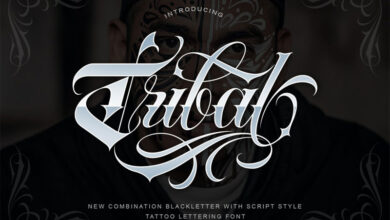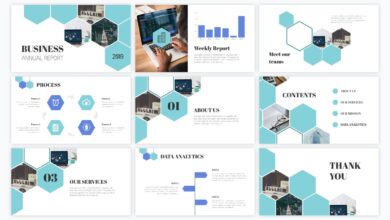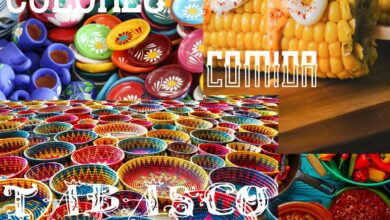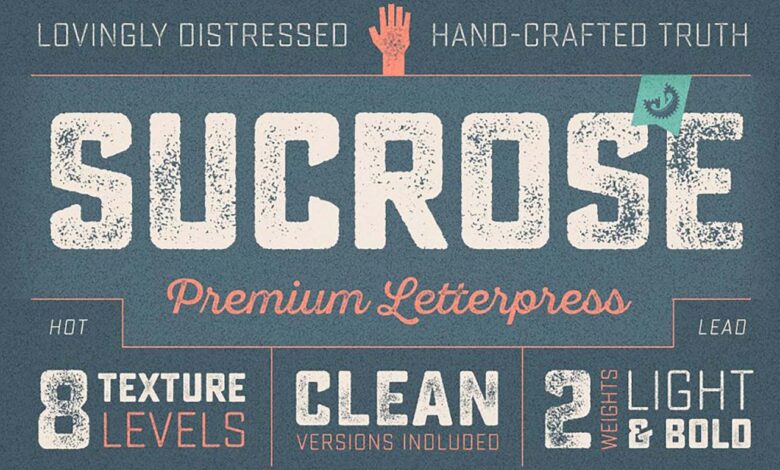
Best Fonts for Posters A Designers Guide
Best fonts for posters? It’s a question every designer wrestles with! Choosing the right typeface can make or break your poster’s impact, transforming a bland announcement into a captivating visual experience. We’ll dive into the world of serifs, sans-serifs, scripts, and display fonts, exploring their unique characteristics and how to pair them effectively for maximum readability and visual punch.
Get ready to unlock the secrets to creating posters that truly grab attention!
From understanding font legibility at a distance to mastering font pairing and considering your target audience, this guide covers everything you need to know to select the perfect fonts for your next project. We’ll even look at specific poster types – from event announcements to motivational posters – and provide tailored font recommendations. Let’s transform your poster designs!
Poster Font Categories: Best Fonts For Posters
Choosing the right font is crucial for effective poster design. The typeface significantly impacts readability and the overall visual message. Different font categories offer unique strengths, making specific choices more suitable for certain poster types and purposes. Understanding these categories is key to creating impactful and easily digestible posters.
Serif Fonts for Posters
Serif fonts, characterized by small decorative strokes (serifs) at the ends of letterforms, often evoke a sense of tradition and sophistication. Their serifs can aid readability, particularly in larger sizes, as they guide the eye along the lines of text. However, in smaller sizes, the serifs can sometimes make the text appear cluttered. Examples of serif fonts well-suited for posters include Times New Roman (classic and versatile), Garamond (elegant and refined), and Georgia (highly readable even in smaller sizes).
Georgia, in particular, is designed for on-screen readability, making it a strong contender for posters that might be viewed digitally as well as in print. The subtle contrast between thick and thin strokes in serif fonts also adds visual interest without being overly distracting.
Sans-Serif Fonts for Posters
Sans-serif fonts, lacking the decorative serifs, tend to appear cleaner and more modern. They are generally considered highly legible, especially in larger sizes used for headlines and titles on posters. Their minimalist aesthetic makes them versatile, fitting for a wide range of poster styles, from minimalist designs to bold and contemporary ones. Popular sans-serif fonts for posters include Helvetica (iconic and widely recognized), Arial (versatile and readily available), and Open Sans (highly readable and web-friendly).
The clean lines of sans-serif fonts lend themselves well to modern, tech-related, or corporate posters. Their straightforward appearance helps ensure the message is clear and easy to understand.
Script Fonts for Posters
Script fonts mimic handwriting, often possessing a flowing, elegant appearance. However, their use in posters requires careful consideration. While beautiful for adding a touch of personality or flair, they are generally less readable than serif or sans-serif fonts, especially in large blocks of text. Script fonts are best used sparingly, perhaps for a title or a short tagline, rather than for lengthy text.
Examples include Edwardian Script ITC (classic and elegant), Pacifico (casual and playful), and Great Vibes (flowing and artistic). The appropriateness of a script font depends entirely on the poster’s context and overall design. A wedding invitation poster might benefit from a delicate script, while a punk rock concert poster might use a more stylized and bold script.
Display Fonts for Posters
Display fonts are designed to make a statement. They are often highly stylized, decorative, and not intended for large amounts of body text. Their primary purpose is to grab attention, making them ideal for headlines, titles, and short, impactful phrases on posters. Display fonts come in a vast array of styles, from geometric to playful, and their use can greatly influence the overall mood and tone of the poster.
Examples include Impact (bold and highly visible), Bebas Neue (clean and modern), and Lobster (playful and hand-drawn style). The unique visual characteristics of display fonts should complement the overall aesthetic of the poster design.
| Font Category | Readability | Visual Impact | Suitable Poster Types |
|---|---|---|---|
| Serif | High (especially in larger sizes) | Traditional, sophisticated | Historical events, literary works, formal announcements |
| Sans-serif | High (across various sizes) | Modern, clean, versatile | Technology, corporate events, minimalist designs |
| Script | Low (for large blocks of text) | Elegant, flowing, personalized | Wedding invitations, artistic events, personal announcements (short text) |
| Display | Low (for body text) | Bold, attention-grabbing, stylized | Headlines, titles, short impactful phrases |
Font Legibility and Readability at a Distance
Designing effective posters requires careful consideration of how the chosen typeface will be perceived from a distance. Even the most striking font can become illegible if not appropriately sized and styled for its intended viewing distance. This section delves into the crucial aspects of font weight, size, spacing, and style to ensure your poster’s message is clear and impactful, even from afar.Font Weight and Size Influence on ReadabilityThe weight (boldness) and size of a font dramatically affect its readability at a distance.
Heavier weights, like bold or extra bold, are generally more legible from far away because they have a stronger visual presence. Thin or light weights, conversely, tend to disappear as viewing distance increases. Similarly, larger font sizes are inherently more readable than smaller ones, particularly at a distance. Think of highway signs – they utilize large, bold fonts for maximum visibility.
A rule of thumb is to choose a font size that allows for comfortable reading from the furthest anticipated viewing point. For example, a poster viewed from across a large room will need significantly larger text than one seen from close proximity.Letter Spacing (Tracking) and Line Spacing (Leading) for Optimal LegibilityProper spacing between letters (tracking) and lines (leading) is critical for readability, especially in poster design.
Tightly spaced letters can clump together, making words difficult to decipher from a distance. Conversely, excessively wide tracking can make the text appear scattered and less cohesive. Similarly, insufficient leading (the space between lines of text) can create a dense, visually overwhelming block of text that is hard to read. Appropriate leading allows the eye to easily scan and follow the text.
A good balance of both is essential; experimentation and iterative design are key to finding the sweet spot for your poster.Readability of Different Font Styles in a Poster ContextDifferent font styles impact readability in unique ways. Condensed fonts, which have horizontally compressed characters, can save space but may reduce legibility at a distance, as the characters become thinner and potentially less distinct.
Expanded fonts, with wider character spacing, can improve readability at a distance, but they may require more space overall. Serif fonts (with small decorative flourishes on the letterforms) generally offer better readability in printed materials at a distance than sans-serif fonts (without these flourishes), as the serifs act as visual guides for the eye. However, sans-serif fonts often perform better on screens.
The optimal choice depends on the specific design context and viewing distance.Poster Mock-Up Demonstrating Readability DifferencesLet’s imagine two versions of a poster advertising a music festival. The “poor” design uses a thin, italicized sans-serif font in a small size (12pt) with tight tracking and minimal leading. The text is crammed into a small space at the bottom, a light blue color against a similarly light-toned background.
The festival name, “Summer Sounds,” is only slightly larger than the rest of the information. From even a moderate distance, this text is almost unreadable; the letters blend together, and the information is lost.In contrast, the “good” design uses a bold, sans-serif font (24pt) with slightly expanded tracking and generous leading. The festival name “Summer Sounds” is significantly larger (48pt) and uses a contrasting dark color against a lighter background.
Key information (dates, location, artists) is clearly presented using a slightly smaller, but still comfortably readable, font size (18pt). This poster remains legible even from a considerable distance, with the key information standing out clearly. The overall layout is clean and uncluttered, maximizing readability.
Font Styles and Pairing for Effective Communication
Choosing the right font pairings and styles is crucial for creating a poster that’s not only visually appealing but also effectively communicates its message. A well-chosen font combination enhances readability and creates a visual hierarchy that guides the viewer’s eye, ensuring key information stands out. Poor font choices, on the other hand, can lead to a cluttered and confusing design, ultimately undermining the poster’s purpose.
Effective Font Pairings for Posters
Three effective font pairings for posters often involve combining a serif and a sans-serif font, leveraging their distinct characteristics to create contrast and visual interest. This approach allows for clear headings and body text that complement each other without clashing.
- Pairing 1: Playfair Display (serif) and Open Sans (sans-serif). Playfair Display, with its elegant serifs, works well for headlines and titles, commanding attention with its classic yet sophisticated feel. Open Sans, a clean and highly legible sans-serif font, provides excellent readability for body text, ensuring the message is easily absorbed. This pairing is versatile and works well for a wide range of poster themes.
- Pairing 2: Montserrat (sans-serif) and Lora (serif). Montserrat’s geometric sans-serif forms offer a modern and clean aesthetic, ideal for subheadings and shorter text blocks. Lora, a serif typeface with a slightly more traditional feel, provides a good contrast and works well for longer text sections, ensuring a balance between modern and classic design elements. This pairing is suitable for posters targeting a younger audience while maintaining readability.
- Pairing 3: Roboto (sans-serif) and Merriweather (serif). Roboto, a highly versatile and geometric sans-serif font, is excellent for headlines and body text due to its clean and contemporary feel. Merriweather, a serif font with a high level of readability, complements Roboto well, especially for longer text blocks requiring high legibility. This combination provides a modern yet approachable feel.
Impact of Font Color Choices on Readability and Visual Appeal
Font color selection significantly impacts readability and visual appeal. The contrast between the font color and the background color is paramount. Insufficient contrast makes the text difficult to read, while excessive contrast can be jarring.
Optimal contrast is achieved using a color contrast checker tool to ensure sufficient contrast ratios, particularly for accessibility reasons.
For example, a dark font (e.g., dark gray or black) on a light background (e.g., white or light gray) generally provides excellent readability. Conversely, a light font (e.g., light gray or white) on a dark background (e.g., dark blue or black) can also be effective, but requires careful consideration to avoid sacrificing readability. The background color should also complement the overall theme and visual style of the poster.
Using vibrant background colors might necessitate adjusting font color to maintain sufficient contrast and prevent the text from being lost.
Using Contrasting Fonts to Create Visual Hierarchy, Best fonts for posters
Visual hierarchy guides the viewer’s eye through the poster’s information. Using contrasting fonts allows for a clear distinction between different levels of importance. Larger, bolder fonts are typically used for headlines and main titles to grab attention immediately. Smaller, less prominent fonts are used for body text and supporting information. This ensures that the most important message is immediately clear, with supporting details following in a logical sequence.
For example, a large, bold sans-serif font could be used for the main headline, while a smaller serif font could be used for body text, and a script font for a tagline or subheading.
Best Practices for Combining Different Font Styles and Weights
Combining different font styles and weights requires careful consideration to avoid a cluttered and unprofessional look. It is recommended to limit the number of fonts used to two or three at most, to maintain visual consistency. Varying font weights (e.g., bold, regular, light) within a single font family can provide visual interest and hierarchy without introducing too many disparate styles.
Maintain consistent kerning (spacing between letters) and leading (spacing between lines) to ensure readability. Avoid using too many decorative fonts, as they can be difficult to read and may detract from the overall message.
Fonts for Specific Poster Types
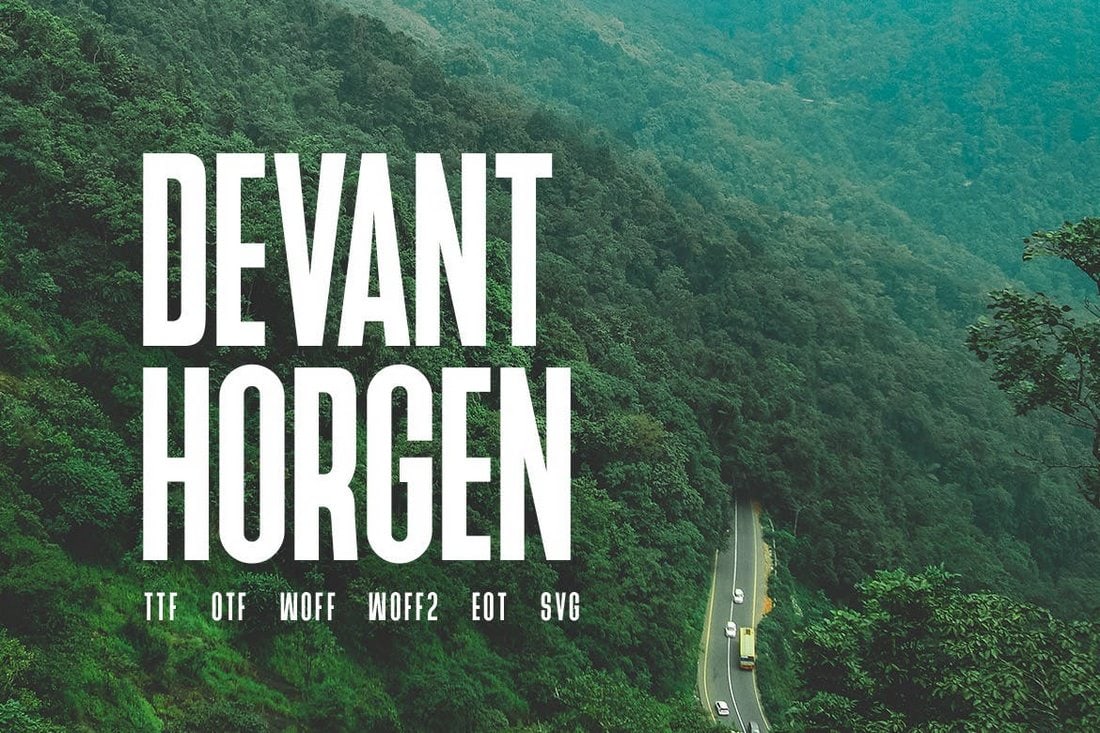
Source: designshack.net
Choosing the right font is crucial for poster design; it significantly impacts how effectively your message is conveyed. Different poster types demand different typographic approaches to resonate with their intended audience and purpose. The following sections explore suitable font choices for various poster categories, emphasizing the rationale behind each selection.
Event Posters
Event posters need to grab attention quickly and communicate key information (date, time, location, etc.) clearly. Fonts should be easily readable from a distance and reflect the tone of the event. For a music festival, a playful, slightly distressed font like “Bebas Neue” or a retro-inspired font like “Anton” could work well. These fonts evoke a sense of energy and fun.
For a more formal event like a conference or seminar, a clean and legible sans-serif font like “Open Sans” or “Lato” would be more appropriate, conveying professionalism and sophistication. The choice depends heavily on the target audience and the overall aesthetic desired. For instance, a bold, condensed sans-serif like “Roboto Condensed” could effectively highlight the event name, while a more delicate script font could be used for supplementary information like the location.
The key is balance and clarity.
Movie Posters
Movie posters are all about creating a mood and generating intrigue. Font selection plays a vital role in establishing the genre and tone. A gritty, hand-drawn font like “Blackoak” might suit a Western, while a sleek, futuristic font like “Orbitron” could be perfect for a science fiction film. For a romantic drama, a classic serif font like “Playfair Display” or a flowing script font like “Great Vibes” might evoke the appropriate emotional response.
Often, movie posters utilize multiple fonts—a bold, impactful font for the title and a more subtle font for supporting text like the actors’ names or tagline. The contrast between these fonts helps to guide the viewer’s eye and create visual hierarchy. Consider the iconic movie posters you’ve seen; the fonts are rarely an afterthought.
Motivational Posters
Motivational posters aim to inspire and uplift. Fonts should be visually appealing and convey a sense of positivity and optimism. A bold, sans-serif font like “Impact” can create a strong, impactful statement. Alternatively, a handwritten-style font like “Pacifico” can lend a more personal and approachable feel. The use of color is also critical in motivational posters, often paired with vibrant backgrounds and strong imagery.
The font choice should complement the overall design, enhancing the message’s inspirational quality. Fonts that appear optimistic and encouraging, without being overly simplistic or childish, are ideal. The visual impact is crucial—a font that feels too cluttered or overly ornate can detract from the message.
Educational Posters
Educational posters require high legibility and clarity. The primary goal is to communicate information effectively.
- Open Sans: A highly legible sans-serif font suitable for large amounts of text. Its clean design ensures readability even at smaller sizes.
- Roboto: Another excellent sans-serif option, known for its geometric shapes and consistent kerning. It’s versatile and works well for both headings and body text.
- Raleway: A versatile sans-serif font that offers various weights and styles, allowing for flexibility in creating visual hierarchy.
- Lora: A serif font that offers good readability, especially for longer texts. Its traditional feel can be suitable for educational materials focusing on history or literature.
The selection prioritizes clarity and readability, ensuring that the information is easily absorbed by the viewer, regardless of the viewing distance. Avoiding overly decorative or stylized fonts is key for maximum comprehension.
Considering Context and Target Audience
Choosing the right font for a poster isn’t just about aesthetics; it’s about effectively communicating your message to your intended audience. The font you select significantly impacts how your poster is perceived, influencing everything from its overall tone to its readability and memorability. Understanding your audience and the context in which your poster will be displayed is crucial for making informed font choices.Font selection directly reflects the target audience’s age, background, and interests.
A poster targeting teenagers might employ a bold, playful font, while a poster for a professional conference would benefit from a more sophisticated and legible typeface. Consider the level of formality required; a casual event might call for a handwritten-style font, while a formal announcement necessitates a classic serif or sans-serif font. Mismatched fonts can lead to a jarring experience, diminishing the impact of the poster’s message.
Choosing the best fonts for posters is crucial for readability and impact. You want something bold and memorable, right? Well, creating engaging YouTube thumbnails uses similar principles; check out this awesome guide on getting it on with YouTube to learn more about visual appeal. Then, armed with that knowledge, you can confidently select the perfect fonts for your posters, ensuring they grab attention just as effectively.
Target Audience Influence on Font Selection
The characteristics of your target audience heavily influence font choices. For instance, a poster aimed at young children would utilize playful, rounded fonts like Comic Sans (despite its controversial nature, it’s still recognizable for its child-friendly appeal) or Bubblegum Sans. These fonts evoke a sense of fun and approachability. Conversely, a poster for a financial institution would likely employ a more serious and reliable font like Garamond or Times New Roman, projecting professionalism and trustworthiness.
These fonts are associated with tradition and authority, fitting for a financial context. Using the wrong font can alienate your target audience; a playful font on a legal notice would seem unprofessional, while a serious font on a children’s event poster might seem intimidating.
Font Choice and Poster Tone
Different fonts inherently convey different moods and emotions. A bold, sans-serif font like Impact can create a sense of urgency and excitement, ideal for announcing a sale or event. In contrast, a delicate script font like Edwardian Script ITC might suggest elegance and sophistication, fitting for a high-end product or art exhibition. A more geometric sans-serif like Futura can communicate modernity and minimalism, perfect for a tech company or product launch.
The font choice directly impacts the overall tone; a poster using a playful font will feel lighter and more approachable than one using a formal, traditional font.
Contextual Considerations in Font Selection
The context in which the poster will be displayed significantly influences font selection. A poster in a busy, crowded environment (like a shopping mall) needs to be highly legible from a distance, requiring a simple, bold font with good kerning and spacing. A poster in a more controlled setting (like a gallery) allows for more creative font choices, including more stylistic or decorative fonts.
The environment dictates the level of detail and complexity the font can afford; a highly detailed script font might be lost in a noisy environment, while a simpler font would be easily readable. The lighting conditions also play a role; a dark setting might require a lighter font color on a darker background, and vice versa.
Comparative Example: Different Fonts, Different Moods
Let’s consider a poster advertising a theatrical production. Poster A: Uses a bold, slightly distorted sans-serif font like Bebas Neue for the title “Macbeth,” with smaller, cleaner sans-serif text for supporting information (date, time, location). The color scheme is dark red and black. This evokes a sense of drama, intensity, and perhaps even a hint of danger, fitting the play’s themes.
Poster B: Uses an elegant serif font like Playfair Display for the title “A Midsummer Night’s Dream,” accompanied by a delicate script font for the subtitle and supporting details. The color scheme is pastel shades of green and pink. This creates a more whimsical, romantic, and ethereal atmosphere, aligning with the play’s lighthearted and magical elements.The contrast between these two posters demonstrates how different font choices can completely alter the mood and effectively communicate the unique tone of each theatrical production.
The visual style, including the color palette, complements the chosen fonts to enhance the overall effect.
Final Summary
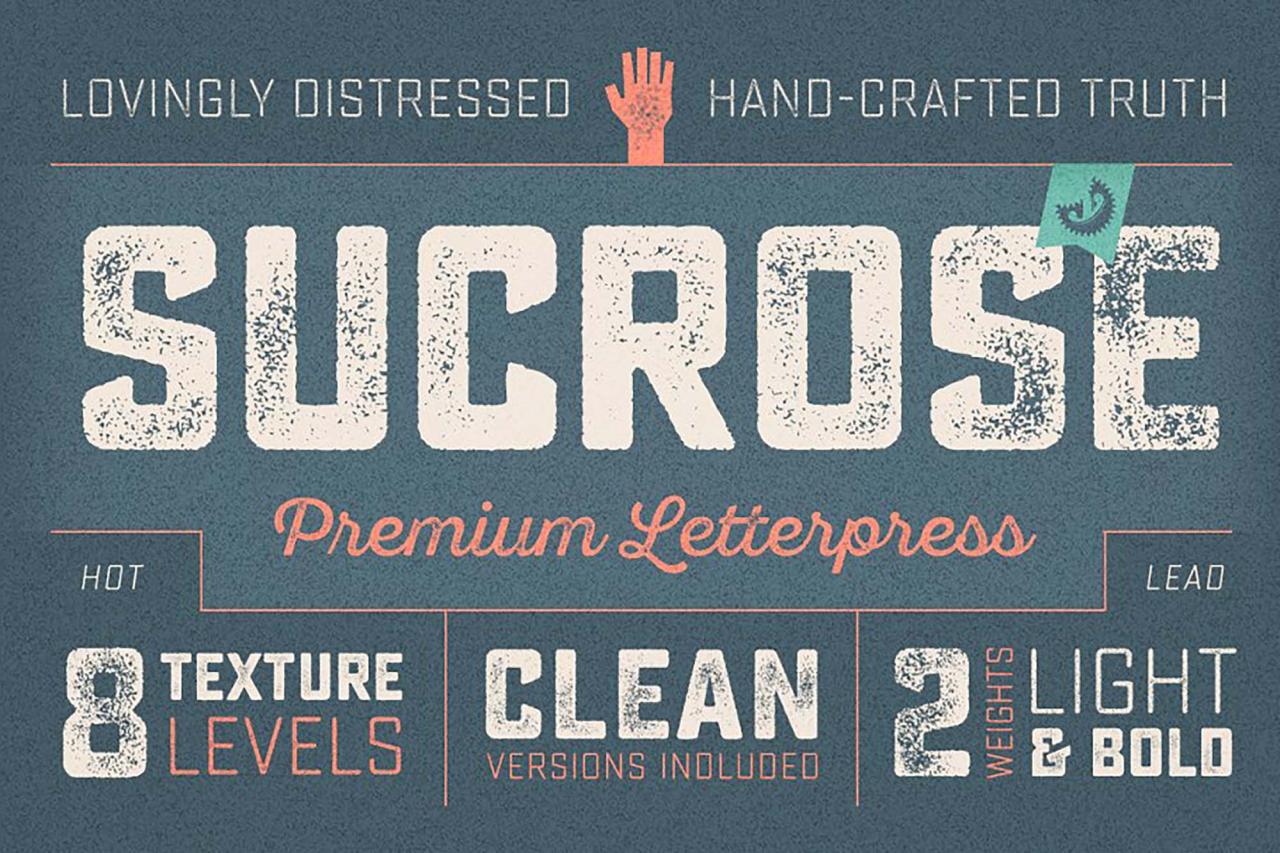
Source: unblast.com
Ultimately, selecting the best fonts for your posters is a creative journey. It’s about understanding the nuances of different typefaces, their impact on readability and visual appeal, and how to tailor your choices to your specific message and audience. By carefully considering font weight, size, spacing, and pairing, you can craft posters that are not only visually stunning but also effectively communicate your intended message.
So go forth, experiment, and create posters that leave a lasting impression!
Top FAQs
What’s the difference between serif and sans-serif fonts?
Serif fonts have small decorative strokes (serifs) at the ends of their letters, often conveying a more traditional or formal feel. Sans-serif fonts lack these strokes, appearing cleaner and more modern.
How can I improve the readability of my poster from a distance?
Use larger font sizes, bolder weights, ample leading (line spacing), and good tracking (letter spacing). Avoid overly decorative or thin fonts.
What are some good online resources for finding fonts?
Google Fonts, Adobe Fonts, and Font Squirrel offer a vast selection of free and paid fonts.
Should I always use contrasting colors for text and background?
High contrast is generally best for readability, especially from a distance. However, subtle contrasts can work well for a more sophisticated look, depending on your design.
